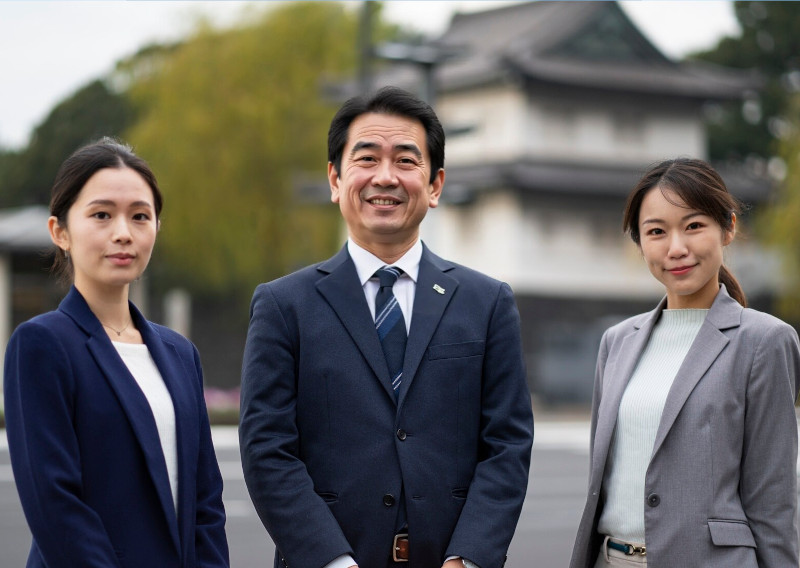In an era of rapid globalization and technological advancement, cultivating effective leadership is paramount for success. While both Japanese and Western companies recognize the importance of developing next-generation leaders, their methodologies diverge significantly, influenced by cultural, historical, and economic factors.
The Japanese Approach: Stability and Harmony
Japan’s leadership development practices are rooted in cultural values such as group harmony (wa), respect for seniority (nenko), and long-term commitment to the organization. These traditions stem from post-war employment models that prioritized social cohesion and stable lifetime employment. As a result, companies have historically emphasized gradual, experience-based development and internal promotion built on trust, tenure, and loyalty.

Seniority-Based Progression (Nenko System)
Promotions and salary increases have traditionally been based on length of service rather than performance. This system promotes stability and employee retention, though it can limit the advancement speed of high performers.
On-the-Job Training (OJT) and Mentorship
Japanese firms rely heavily on OJT, where employees develop skills through direct experience under the guidance of senior colleagues. This hands-on model supports the transfer of company-specific expertise and reinforces shared values.
Collective Decision-Making and Harmony
Decision-making typically favors consensus-building to preserve team unity and avoid conflict. Leaders are expected to act as facilitators rather than top-down decision-makers.
Succession Planning in Family Businesses
In family-owned firms, leadership is often passed down to relatives to preserve legacy and values. However, when suitable successors are lacking, companies increasingly explore external succession or strategic mergers.
The Western Approach: Individualism, Competition, and Transparency

Western leadership development is shaped by cultural principles of individualism, meritocracy, and competitive achievement. Influenced by capitalist models and fluid career progression, Western firms prioritize performance-based advancement and reward innovation, assertiveness, and ambition. Leadership pipelines are designed to identify high-potential individuals early and provide structured, transparent paths for development, often across multiple roles or even companies.
Merit-Based Advancement
Promotions are typically based on individual performance, skills, and leadership potential. This encourages competition and innovation, allowing talent to rise quickly.
Structured Leadership Development Programs
Companies often implement formalized training programs—such as coaching, cross-functional projects, and job rotations—to broaden strategic thinking and leadership capacity.
Transparency and Feedback Culture
Open performance reviews and regular feedback are standard, creating a culture of accountability and continuous improvement.
Diversity and Inclusion in Leadership
Western companies increasingly focus on diversifying leadership teams to reflect broader societal demographics and encourage inclusive decision-making.
Comparative Overview
| Aspect | Japanese Approach | Western Approach |
|---|---|---|
| Promotion Criteria | Tenure-based (Nenko system) | Performance and competency-based |
| Training Methodology | On-the-job training with mentorship | Structured programs with formal training and coaching |
| Decision-Making Style | Consensus-driven, group harmony-focused | Individual accountability with collaborative input |
| Succession Planning | Family or internal succession, preserving legacy | Open to external candidates, focusing on best fit |
| Leadership Diversity | Homogeneous leadership, gradual inclusion efforts | Active pursuit of diverse leadership representation |
| Risk Tolerance | Risk-averse, emphasizing stability | Encourages calculated risk-taking and innovation |
| Career Path Transparency | Often opaque—career progression may not be clearly explained or documented | Transparent career paths with defined competencies and promotion criteria |
| Mobility Expectations | Employees are expected to stay with one company long-term | Employees are expected to move roles or companies to grow their careers |
| Leadership Style Focus | Emphasizes humility, group facilitation, and indirect influence | Emphasizes charisma, decisiveness, and direct accountability |
Convergence and Evolution
While Japanese and Western leadership development models have historically differed, recent trends reveal a growing convergence driven by globalization, demographic shifts, and workforce transformation.

Japanese Companies: Shifting Toward Performance and Inclusion
Amid labor shortages, aging leadership, and international competitiveness, many Japanese firms are modernizing their leadership pipelines. They are moving away from rigid seniority systems toward merit-based promotion and more transparent advancement paths. Gender equality, a long-standing problem in Japan, has also become a priority. Digital platforms that match mentors and rising talent are helping to engage and elevate women to leadership roles.
Western Companies: Rebalancing Speed with Stability
Western organizations, long known for dynamic promotion models and job mobility, are now emphasizing employee retention and organizational commitment. Recognizing the high costs of turnover and the value of institutional knowledge, many companies are reinvesting in long-term leadership development—using coaching, upskilling, and employee-centered management frameworks.
Some are adopting “high-commitment management” philosophies, which prioritize empowerment, mutual trust, and shared responsibility; traits historically emphasized in Japanese corporate culture.
Toward a Hybrid Future
This cross-pollination signals a shift toward hybrid leadership models that blend Western agility with Japanese depth. Future-ready organizations are those that cultivate both quick thinkers and long-term stewards, develop diverse pipelines, and foster cultures that support both innovation and employee well-being.

